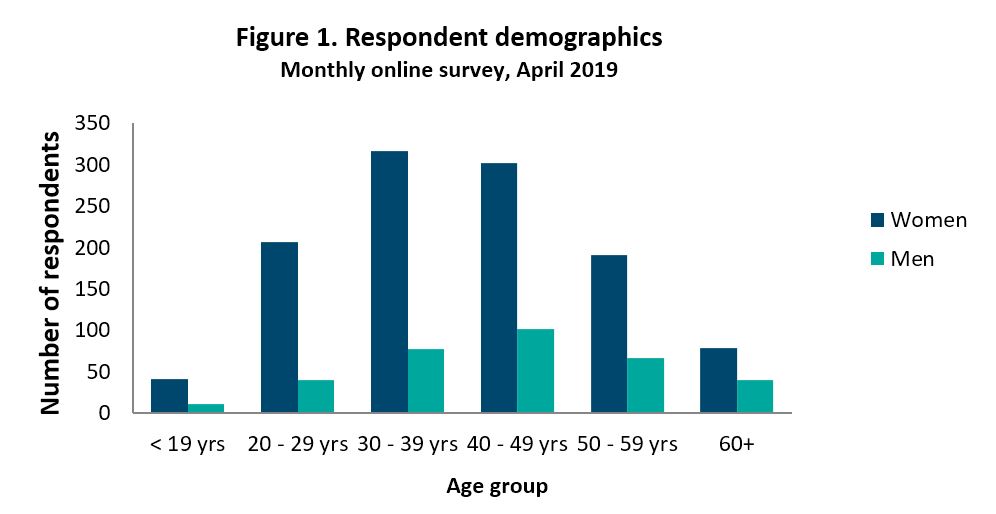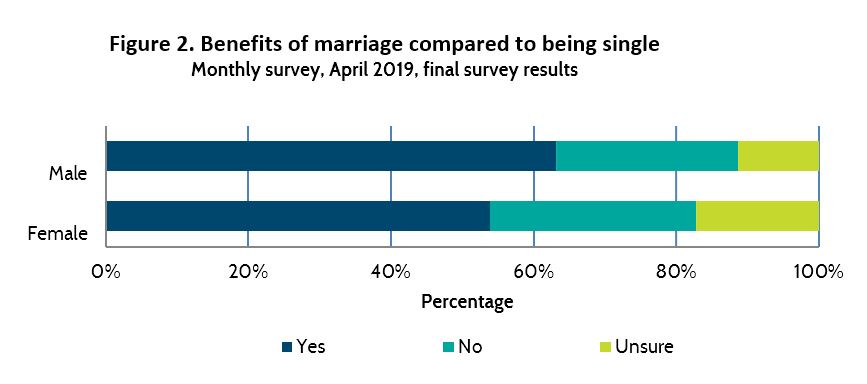Introduction
Would you like to be notified when a new survey report is released? Sign up here
Demographic and social changes over the past century that have impacted on the institution of marriage have fuelled a range of competing views on the relevance of marriage to a modern Australian society.
Pivotal changes have included declining marriage rates and increasing divorce rates, increases in the number of children born outside marriage, and more recently an expansion of the definition of marriage to include same-sex couples. Delays in the age of first marriage have also been observed, largely driven by increasing opportunities for women to pursue education and career goals, and achieve independent financial security, coupled with the introduction of the contraceptive pill. The ability to reliably control fertility led to an increase in cohabitation and an associated weakening of the social stigma attached to a broader range of partnering choices and societal tolerance to the bearing children out of wedlock (Carmichael, 1995; McDonald, 1995).
However, despite these changes negatively impacting the overall proportion of couples who are married, the majority of young, unmarried Australians strongly express a preference for marriage, overwhelming indicating a desire to form stable and nurturing relationships, and raise children in happy, stable family settings (Qu & Soriano, 2004). Previous research has attempted to unpack this paradox by dividing people into attitudinal groups, finding broad variation within young adults in beliefs about marriage, especially in the dimensions of religious views of marriage, and readiness for marriage (Kay, 2012). Young people who were more likely to view marriage as important, and/or have a religious view of the meaning of marriage (“Marriage involves a covenant with God, not just a legal contract”) were more likely to have a positive attitude towards marriage.
The April 2019 monthly online survey sought to explore the views of an older cohort of predominantly mid-aged visitors to the Relationships Australia website by asking them a few questions about the relevance, benefits and difficulties associated with modern marriage.
Previous research finds that…
- The crude marriage rate has mostly fallen from 1972 onwards, with the lowest rate (5.3) occurring in 2001. Since this time, the rate has fluctuated between 5.4 and 5.5 marriages per 1000 people in the resident population.
- The median age at marriage for males in 2017 was 32.0 years, an increase from 26.7 years of age in 1984. The median age at marriage for females in 2017 was 30.1 years compared with 24.2 years of age in 1984.
- The majority of marriages continue to be overseen by civil celebrants. The proportion of marriage ceremonies overseen by a civil celebrant increased to 78.0 per cent of all marriages in 2017 compared with 39.6 per cent in 1984.
Results
More than 1,580 people responded to the Relationships Australia online survey in April 2019. Three‑quarters of survey respondents (77%) identified as female, with more females than males responding in every age group (see figure 1 below). Just over eighty-five per cent of survey respondents were aged between 20‑59 years, and more than 55 per cent of respondents comprised women aged between 20‑49 years (inclusive).
As for previous surveys, the demographic profile of survey respondents remains consistent with our experience of the groups of people that commonly access the Relationships Australia website, noting a slight increase in the proportion of mid-aged women respondents when compared to previous surveys.

There were significant differences between the views of male and female survey respondents when asked about the contemporary relevance of marriage. Just under two-thirds of women (59%) compared with half of men (49%) reported that they considered marriage to be less relevant now than it was in the past. Thirty‑five per cent of women and 45 per cent of men reported that they thought marriage still had contemporary relevance.
Consistent with the large proportion of survey respondents reporting that marriage has lost its contemporary relevance, a substantial majority of male and female survey respondents (75%) considered people were less committed to the idea of marriage than they were in the past. More than 65% of women and 45% of men reported that they considered married people were not happier than people in other types of relationships.
In contrast, the majority of survey respondents reported there were positive benefits to being married when compared to being single. Men (63%) were more likely than women (54%) to report that there were more benefits to being married than single, while 11 per cent of men and 17 per cent of women were unsure whether there were benefits attributable to marriage that exceeded the benefits of being single (figure 2).

A similar proportion of men (65%) reporting positive benefits of marriage, also reported that they considered children were better off when their parents were married. In comparison, less than 40 per cent of women thought their children were better off when their parents were married, and a further 40 per cent considered children were not better off when their parents were married.
While men and women reported differing views on a number of survey questions relating to the contemporary relevance of marriage, a majority (55%) of both men and women agreed with the proposition that being married is more difficult than it was in the past, while around one-sixth (12%) were undecided.
References
Australia Bureau of Statistics (1994. 2018). 3310.0 – Marriages and Divorces, Australia, 2017
Carmichael, G. A. (1995). Consensual partnering in the more developed countries: An overview. (Working Papers in Demography No. 56). Canberra: Division of Demography and Sociology, Research School of Social Sciences, Australian National University.
Kay, N. M. (2012). The Changing Meaning of Marriage: An Analysis of Contemporary Marital Attitudes of Young Adults. Brigham Young University Scholars Archive. https://scholarsarchive.byu.edu/etd/2969
Qu, L., & Soriano, G. (2004). Forming couple relationships: Adolescents’ aspirations and young adults’ actualities. Family Matters, 68, 43-49.
McDonald, P. (1995). Families in Australia: A socio-demographic perspective. Melbourne: Australian Institute of Family Studies.
